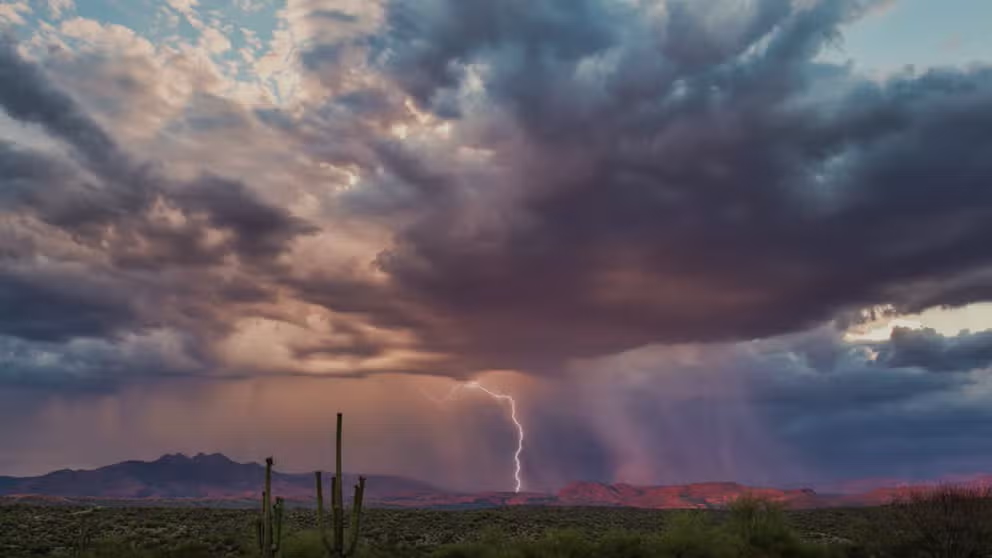Monsoon thunderstorms produce damaging microbursts around Phoenix
The 2024 monsoon season started late across and has not lived up to an average season. NWS meteorologists consider the season to be eight driest event but caution there are several weeks to go.
Damage reported after microburst impacts Phoenix metro
The National Weather Service Phoenix said it received several reports of damage on Thursday associated with microbursts around the state.
PHOENIX – What has been a lackluster monsoon season across the Desert Southwest roared to life Thursday, producing strong thunderstorms in Arizona. It led to microbursts and even sporadic damage.
Video taken from around Phoenix showed downed trees amid ferocious wind gusts.
Microbursts are columns of quick-sinking air in storms that are relatively narrow. But within the impact zone, it can lead to extensive damage and be life-threatening.
The National Weather Service Phoenix received several reports of damage on Thursday associated with microbursts around the state, which are common during waves of monsoonal moisture.
In Scottsdale, one tree fell onto a home, while another tree toppled onto a car, according to storm reports.
Fortunately for the metro area, wind speeds appeared to be on the low end during the phenomenon that can produce wind speeds greater than 100 mph, though Phoenix's Sky Harbor Airport clocked a gust of 64 mph.
In addition to the winds, some communities saw rainfall rates of more than an inch per hour, which led to localized flash flooding.
Monsoon season running among driest on record so far
The Southwest monsoon season annually kicks off on June 15 and lasts through mid to late September, but its activity waxes and wanes dramatically.
Many cities in the Southwest accumulate half of their annual precipitation during the months of June, July, August and September.
A wildcard during any monsoon season is the influence of tropical systems from both the Pacific and western Gulf of Mexico.
The tropical rainfall associated with the cyclones can lead to dramatic upticks in moisture; however, the tropics are not expected to have a significant influence on the 2024 monsoon season.
7 Facts About Monsoon Season
Here are 7 facts about monsoon season.
SOUTHWEST MONSOON SEASON IS HERE: WHAT YOU NEED TO KNOW
The noticeable decrease in precipitation this year marks the second consecutive year of below-average rainfall, with 2023 experiencing drier-than-normal conditions across much of the southwestern U.S.
NWS meteorologists consider the current monsoon season to be the eighth-driest on record, but caution there are several weeks to go.
Occasionally, with the change of seasons, weather patterns can shift and bring in additional moisture, but the changes are unlikely to be sufficient to compensate for precipitation deficits.

